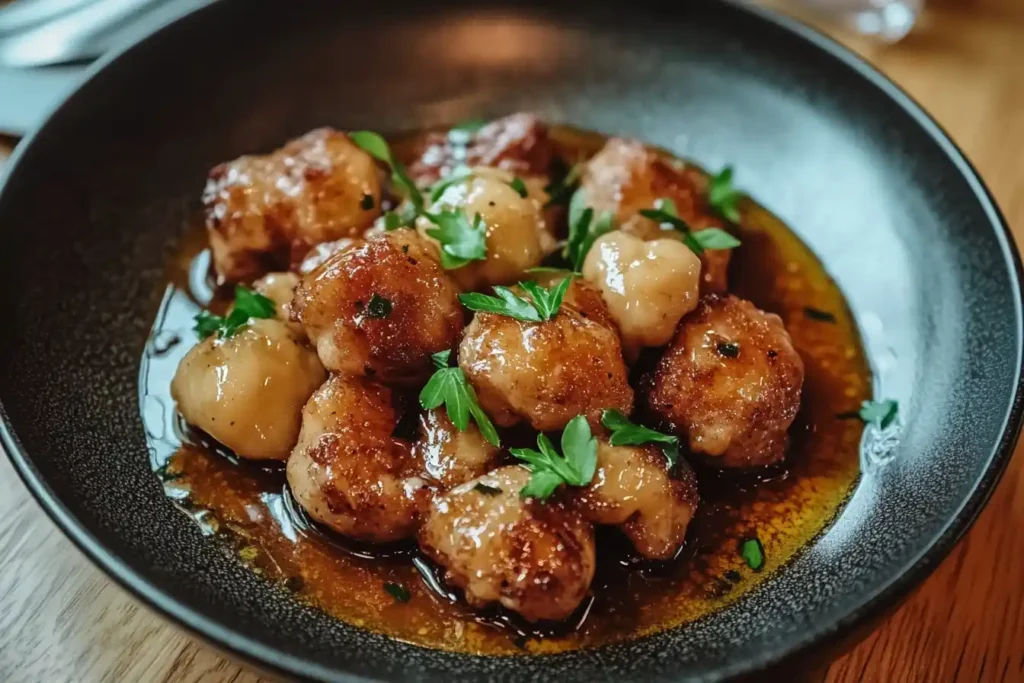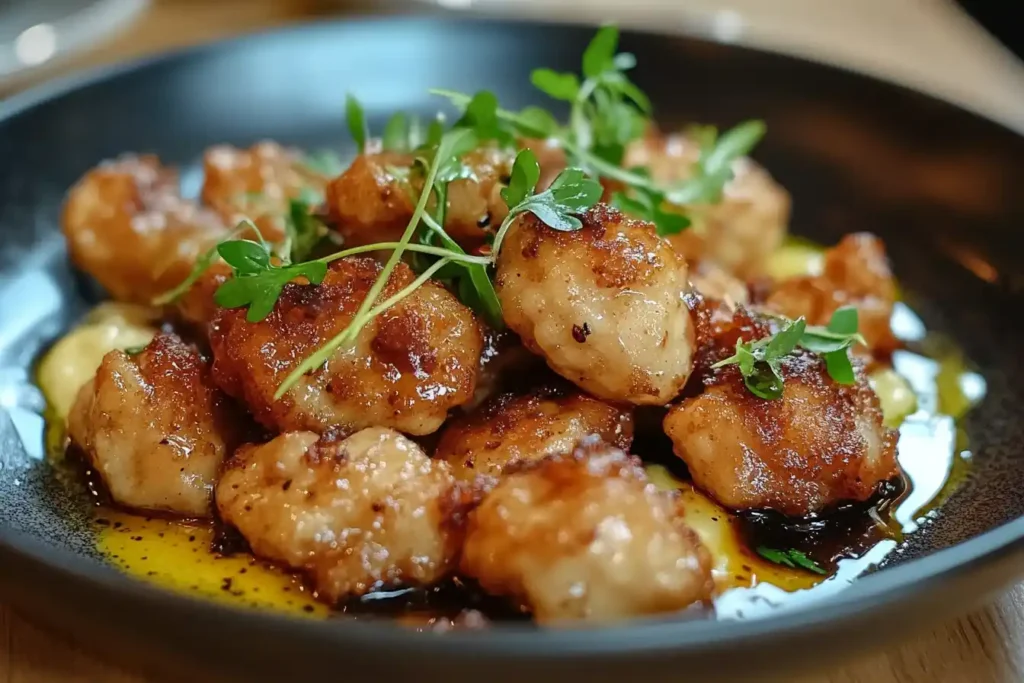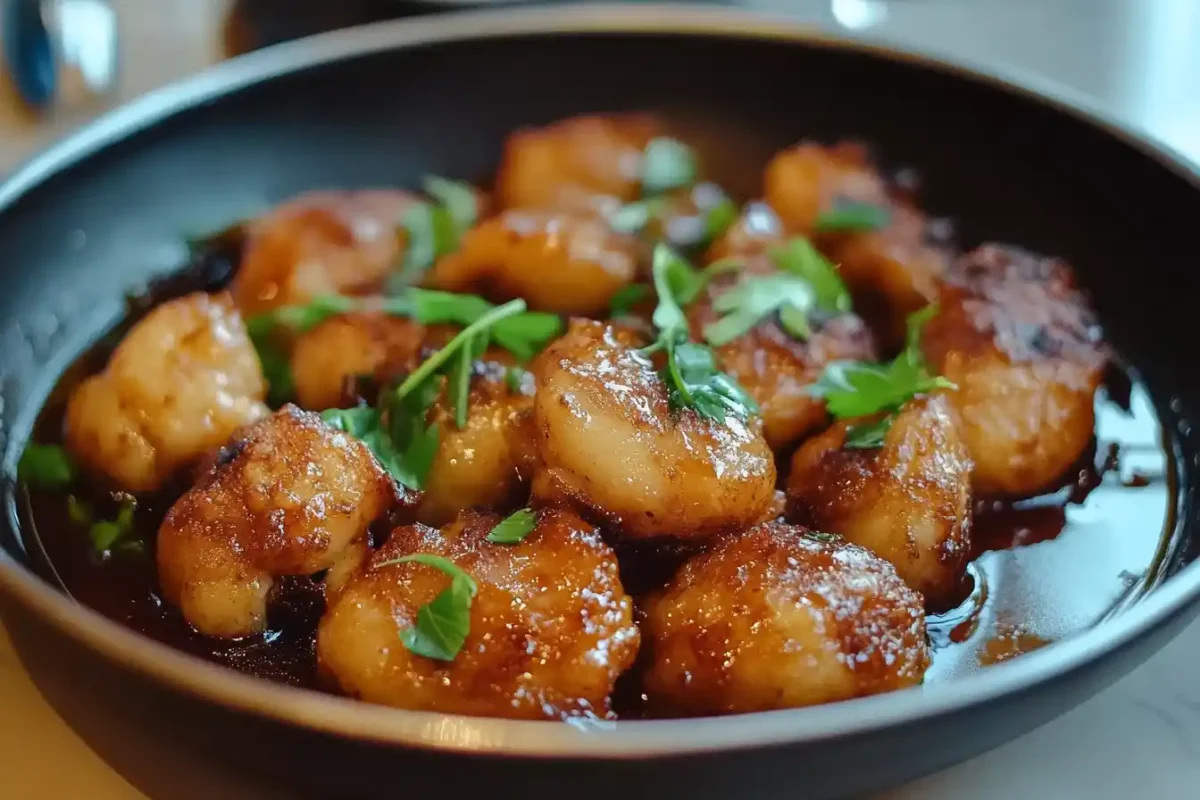Delicate offal from young calves or lamb, cherished in British cuisine. Discover flavor, preparation tips, and their role in historic recipes in Beef Sweetbreads A Complete Culinary Guide. What are sweetbreads in the UK? Many people ask this question when they first come across the term. Although the name suggests baked goods, sweetbreads are neither sweet nor bread. Instead, they are glands—most often the thymus or pancreas—sourced from young animals such as calves or lambs. Their creamy texture and mild flavor appeal to chefs and adventurous eaters.
Nose-to-tail eating once formed the heart of UK cuisine. Before large-scale meat production, no edible part of the animal went to waste. Sweetbreads often found their way to the family table, adding rich nutrients and unique flavors. Modern diners might be less familiar, but UK chefs are working to restore their presence. Understanding What are sweetbreads in the UK? helps food lovers discover a piece of their culinary heritage and perhaps embrace a new dining adventure.
A Closer Look at Sweetbreads in UK Cuisine
Historically, British households were skilled at utilizing offal. For instance, sweetbreads, alongside other organ meats, were staples in everyday meals. However, as times changed, these cuts became less popular. Today, there is renewed interest in rediscovering their charm. With proper guidance, even amateur home cooks can confidently prepare sweetbreads and savor their delicate flavors.
To begin, the upcoming section will delve into the origins of the term sweetbread and uncover its rich culinary background. Following that, we’ll explore the various types and sources of sweetbreads commonly available across the UK. Subsequently, we will examine how these once-celebrated offal gems feature in traditional British recipes and modern Gastronomic trends. After this, we’ll provide a detailed, step-by-step guide to help you master their preparation at home.
Focusing on their nutritional profile, we will look at their health benefits and role in a balanced diet. Following this, we will discuss how sweetbreads have become part of modern UK food culture. Next, we’ll explore the ethical and sustainable ways to source these delicacies. As we move forward, a dedicated section will highlight the best places and suppliers to purchase high-quality sweetbreads.
Afterward, we’ll compare UK traditions with how sweetbreads are seen and cooked in other countries. In addition, the next part will provide ideas for the best pairings and accompaniments to bring out their flavor. In the second-to-last chapter, we’ll answer common questions to clear up any doubts. Finally, the closing section will pull all this information together, offering a complete view of sweetbreads and their place in British cooking.

Understanding the Name and History of Sweetbreads
The name “sweetbread” often confuses newcomers. The “sweet” might refer to their mild, gentle taste, while “bread” could relate to older uses of the word for flesh or morsel. Nobody knows the exact origin, but the result is a term that sparks curiosity.
Sweetbreads differ from liver, kidneys, or heart. They consist of glands—usually from calves or lambs—harvested before the animal matures. The thymus gland (near the throat) and the pancreas (near the stomach) are the prime sources. These glands shrink as the animal ages, which is why younger livestock produce the best sweetbreads. Their creamy texture and subtle flavor set them apart from stronger organ meats.
In the next division, we’ll examine the varieties of sweetbreads and their most common animal sources.
Types of Sweetbreads and Animal Sources
Calf sweetbreads are popular in the UK due to their mild flavor and tender texture. Lamb sweetbreads are smaller and sometimes richer, appealing to those who enjoy a slightly more pronounced taste. Occasionally, pig sweetbreads appear in specialty shops, though they are less common.
When choosing which type of sweetbread to try, your decision may depend on personal preference as well as availability. Fortunately, a reliable butcher can not only guide you to quality sweetbreads but also offer helpful tips on proper storage and preparation. By taking the time to learn about what sweetbreads are in the UK, you will gain the confidence needed to select the variety that best suits your palate. Moreover, this knowledge can elevate your cooking experience and help you appreciate the nuances of this unique ingredient.
In the next installment, discover how sweetbreads fit into traditional British cooking and find new life in modern dining.
Sweetbreads in Traditional UK Dishes
In earlier centuries, British households often included sweetbreads in their menus. Cookbooks described them as versatile treats that could be sautéed, braised, or baked into pies. Such dishes reflected resourcefulness, ensuring no part of the animal went to waste.
Over time, offal lost popularity, but recent years have seen a comeback. Chefs at gastropubs and fine dining spots showcase thymus glands as culinary delicacies. They serve them with roasted roots, Yorkshire puddings, or refined sauces. By reviving thymus glands, UK restaurants connect modern diners with a rich gastronomic past.
Afterwards, in the following segment, we’ll focus on preparation methods to help you handle thymus glands at home.

Tender glazed sweetbreads topped with fresh parsley.
Culinary Techniques and Preparation Methods
Preparing sweetbreads involves a few simple steps. Begin by soaking them in cold water to remove impurities. Then blanch them briefly in simmering water. Once cooled, peel away membranes and trim excess fat.
Pressing them between plates in the fridge helps them keep their shape. Once this step is done, you can pick your cooking method. For example, frying them in butter gives a crispy outside, while cooking them slowly in broth adds a rich flavor. After cooking, season with a little salt and pepper to bring out their natural taste. You can also add gentle herbs like thyme or parsley for a hint of aroma. To finish, pair the thymus glands with a creamy sauce or a light reduction to enhance their delicate flavor.
Moving to the next part, let’s explore their dietary. value and address common health queries.
Nutritional Aspects and Health Considerations
Sweetbreads are a good source of protein, important minerals, and B vitamins. They provide nutrients that are not always found in regular cuts of meat. Eating them in moderation can be part of a balanced diet. However, for people managing cholesterol, it’s better to enjoy them occasionally. Those with specific health issues, such as gout, should consult a doctor before including organ meats in their diet.
Advancing to the following area, let’s see how these unique cuts find a place in modern UK food culture.
Sweetbreads in Modern British Food Culture
Today’s UK food scene embraces nose-to-tail eating again. Influential chefs and food writers highlight the importance of using entire animals. Sweetbreads appear on menus at trendy restaurants, often presented in simple, elegant dishes. Home cooks, guided by online recipes, try them at home and enjoy their subtle flavors.
This revival reduces food waste and supports local farmers. It also encourages diners to step outside their comfort zones. By understanding What are sweetbreads in the UK?, people expand their taste horizons and support ethical eating.
Transitioning to the subsequent portion, we’ll consider the ethical and sustainable factors surrounding thymus glands.
Ethical and Sustainable Considerations
Sourcing sweetbreads from well-reared animals supports responsible agriculture. Nose-to-tail eating wastes fewer resources and respects the entire animal. British farms, known for strict welfare standards, ensure quality and accountability. By choosing locally sourced offal, diners help small farms thrive.
Ethical choices build confidence in the final product. Reducing reliance on popular cuts alone also lessens strain on the environment. Embracing sweetbreads contributes to a more balanced, considerate food system.
Proceeding to the next chapter, we’ll discuss where to find and purchase sweetbreads in the UK.
Purchasing Sweetbreads in the UK
Not every supermarket has sweetbreads available every day, but larger stores like Tesco may carry them occasionally. You can also check with your local butcher or place a special order if needed. Farmers’ markets and online specialty shops are other great options for finding these organ meats.
Make sure to check their freshness and source before purchasing, and store them correctly once you bring them home. With helpful advice from a skilled butcher, you can find top-quality sweetbreads that will make a delicious meal.
Continuing in the following part, we’ll compare UK practices to other culinary cultures.
Comparing UK Sweetbreads to Other Regions
The UK is not alone in valuing sweetbreads. France often highlights them in rich, classical dishes. Italy and Spain incorporate them into regional specialties. British preparations tend to be simpler, allowing their gentle flavor to shine.
Modern British kitchens borrow global ideas, blending techniques and seasonings. This cross-cultural exchange inspires new recipes and broadens sweetbread appreciation. By looking abroad, British cooks find fresh inspiration.
Pairings and Accompaniments
Mild flavors work best with sweetbreads. A crisp white wine, light ale, or cider complements their creamy texture. Serve them alongside mashed potatoes, roasted roots, or steamed greens. Gentle herbs add fragrance without overpowering.
A simple sauce—maybe a white wine reduction—enhances their subtle taste. Texture contrasts also help. Crunchy breadcrumbs or a bright salad can make the dish more interesting. Experiment to find combinations that please your palate.
In the succeeding section, we’ll answer frequently asked questions to address lingering doubts.
Frequently Asked Questions (FAQ)
Q: What is the English name for sweetbreads?
A: They are simply called “sweetbreads” in English.
Q: What part of the animal are sweetbreads?
A: Sweetbreads come from the thymus or pancreas glands of young animals.
Q: What organ meat is sweetbread?
A: Sweetbread is a gland, not a muscle-based organ. Its texture is milder and creamier than liver or kidneys.
Q: What are sweetbreads in the UK at Tesco?
A: Tesco may occasionally stock sweetbreads in the fresh meat section or by special order. Ask the butcher for availability.
Q: What do sweetbreads taste like?
A: They have a mild, slightly nutty flavor and a soft, creamy texture, without the strong taste often found in other offal.
Q: What are British sweetbreads?
A: They are thymus or pancreas glands from UK-sourced animals, reflecting the nation’s tradition of using all parts of the animal.
Conclusion
Sweetbreads were once a staple in British kitchens, and their recent comeback highlights a changing food culture. Learning about what sweetbreads are in the UK helps diners reconnect with a culinary tradition that values sustainability, creativity, and making the most of every part of the animal. These tender glands, when prepared with care, offer a flavor unlike that of common meats, with a delicate texture and subtle richness.
Whether enjoyed at a restaurant or made at home, sweetbreads offer a chance to try something new. They inspire curiosity, respect for old traditions, and thoughtful eating. By including these unique cuts in your meals, you honor a rich culinary past while embracing a more sustainable, balanced, and adventurous future in dining experiences.

